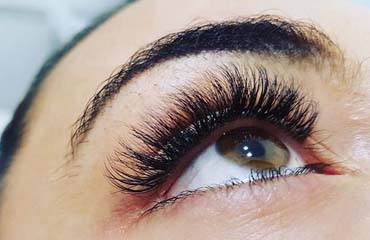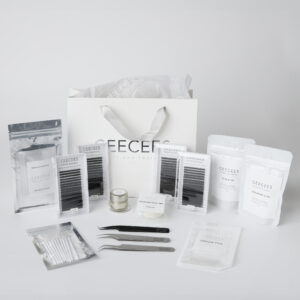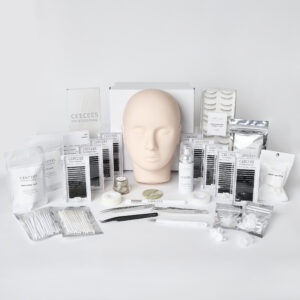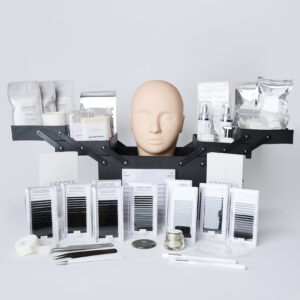Glue Information, Reactions, and Common Issues
When it comes to lash adhesives, there have been many discussions regarding the risks of using them on the skin because they are said to contain formaldehyde. Well, this is a MYTH. Here is some information about lash adhesives and why they are not harmful for the skin.
Formaldehyde is NOT contained in Cyanoacrylate (the main ingredient in lash adhesive). It is a dry gas so it cannot be added as an ingredient. Formaldehyde, however, can be released by Lash Adhesive as a by-product of product breakdown – but it would take MONTHS to breakdown on the natural lashes to cause any adverse effect.
Lash technicians know that the maximum period an extension will remain on natural lashes will be 90-120 days (the total lifespan in the growth cycle). With that said, to minimize any breakdown of lash adhesive, lash technicians should use a new adhesive bottle every 45-60 days.

Formaldehyde is a dry gas. It has never ever been a cosmetic ingredient. It is a 100% naturally occurring substance. In fact, we exhale formaldehyde. It is contained in organically grown food. Our bodies make formaldehyde, and it is used to create proteins and other substances in our bodies. We can be exposed to minimal amounts as a by-product of adhesive breakdown, but the amount we are exposed to in a salon is extremely low, and chemical experts say we should not even be worried as technicians work with it all day.
Is it a carcinogen? There is a science that shows that being exposed to large amounts of high concentrations of formaldehyde can cause an exceedingly rare nasal cancer (but that is nothing to worry about as a lash technician as we work with such little amounts — if you’re a mortician though? Maybe.)
What else could be causing irritations? Stabilizers. Particularly hydroquinone or MHQ. These stabilizers slow down the cure rate of lash adhesives, so they don’t instantly harden on the lash and lash artists have a second or two to place the lash extension first. However, in lash adhesive, there is less than 0.01% of hydroquinone and it does not touch the skin during a lash application —to put it into perspective, hydroquinone is also used in some skin creams (for lightening purposes) that are applied topically, and in box hair dye in concentrations of up to 3%. So, the risk is still extremely low that lash adhesive can set off any reaction.
The bottom line: There are risks with any cosmetic procedure, and lash artists are lucky to have an extremely small percentage of clients become intolerant to the service. If your client starts to experience any itchiness, redness, or swelling after their lash application – be extremely cautious while proceeding. Try Lint-Free Hypoallergenic eye pads as opposed to gel, ditch the primer, and opt for a simple Pre-treatment with a less harsh oil-free cleanser top rep the lashes. There will be a small percent of clients that are intolerant to lash adhesives, which is mainly due to the Cyanoacrylate or Stabilizers.
This intolerance has no cure and clients simply cannot proceed with having eyelash extensions. There is a difference with just being sensitive and allergic. You will have to do your diagnosis to find out what is happening to your client. For sensitive clients, you can opt to use a sensitive glue, and for clients sensitive to eye pads, you can use tape as an option or purchase sensitive tape.
Troubleshooting issues that clients may experience with Lash extensions can be tricky as we are not doctors or chemists, but we do need to have a basic understanding of common issues. For clients that have instant reactions during the application, the most likely causes are the tape, eye pads, or sensitivity to fast dry glue. These can be rectified instantly.
Overnight reactions and issues can be due to intolerance to the glue, which means they will not be able to have lash extensions. If they have redness and stinging sensation on the eyeball, this can be from the fumes of the glue, or the eye pad and tape has been placed too close to the waterline and has scratched the eyeball. If this issue persists with the client for a few days, they will require a medicated eye drop. If the client opens their eyes and has some mild redness and stinging that goes away after a few minutes, then there’s nothing to worry about – just check your application of products and maybe use a sensitive glue instead.
If you have any queries or are not sure on how to resolve the issue with your clients, please contact us and we will be able to advise and assist you with the right way to proceed.
Carole Charles








